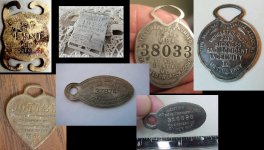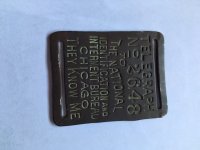Crankinstien
Newbie
I was detecting in Switzerland county, Indiana and found what looks to be a brass tag. It is approx. 2 inches x 3 inches. On the tag it states TELEGRAPH NO. 2648 TO THE NATIONAL IDENTIFICATION AND INTERMENT BUREAU CHICAGO "THEY KNOW ME". What is it !









